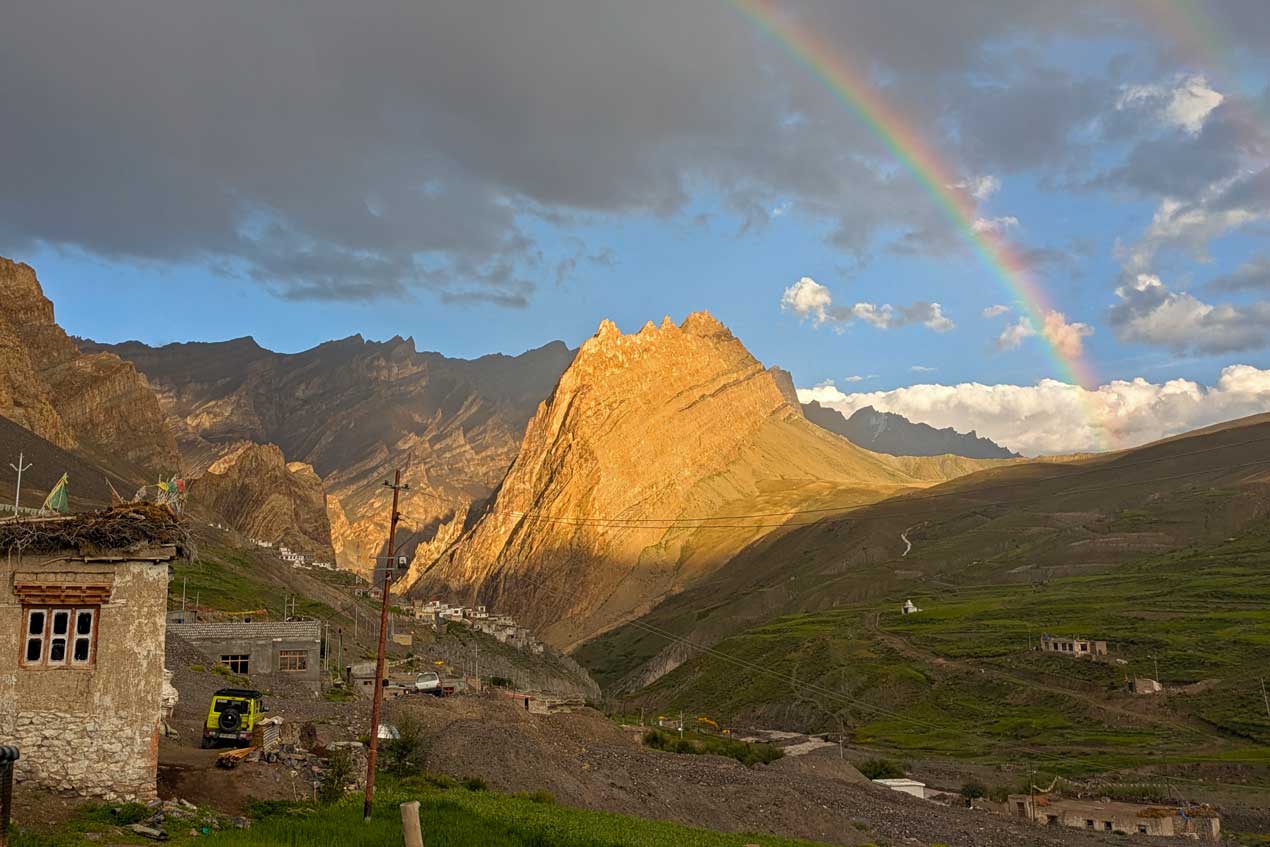Renforcer la résilience climatique des villages du Ladakh
As the climate crisis accelerates, the fragile ecosystems and remote communities of the Himalayas are among the first to feel its impacts. But they can also be at the forefront of solutions, when empowered with the right tools, knowledge, and economic opportunities. At Heco, we believe that responsible tourism can be a powerful lever for both ecological regeneration and social transformation.
Over the past decade, we’ve seen this happen in the villages around the Great Himalayan National Park (GHNP) in Himachal Pradesh. In the early years of our work there, economic hardship kept most villagers focused solely on the survival and needs of their immediate families. Environmental concerns, though felt, took a back seat.
But as Himalayan Ecotourism gradually helped generate meaningful income through sustainable tourism, a remarkable shift occurred. Members of the GHNP cooperative society – once preoccupied with making ends meet – chose to invest their own resources in launching three plantation drives in the park’s ecozone. Their priorities expanded from family to community, from survival to stewardship.
This transformation underscores a key principle behind our work: when rural communities become economically secure, their focus naturally broadens to include the well-being of their environment and society at large. Economic empowerment becomes the foundation for conservation.
From tourism to resilience in Ladakh
In July 2024, we launched our new initiative in Ladakh : “Reinventing Tourism in Rural Ladakh”, with the same vision. We began working with the villagers of Photoksar, helping them enhance their income through carefully designed cultural tourism experiences that attract responsible travellers.
The results have been immediate and encouraging. In 2025, the villagers of Photoksar and Tar reported a substantial rise in income. Perhaps more importantly, this success has also sparked something deeper: a new sense of confidence and responsibility toward the future of their village and the natural systems that support it.
As conversations with villagers deepened, the community began reflecting on long-term challenges—especially the impact of global warming on local water resources. In Ladakh, where agriculture and daily life still depend heavily on glacial meltwater, this is not an abstract concern—it is a looming crisis.
Two key ideas emerged from our community discussions in Photoksar :
1. Greening the Desert: Increasing Vegetation Cover
During our conversations with the villagers of Photoksar, the Heco team introduced the idea of enhancing the local vegetation cover – trees, bushes, and grasses – by making use of the water still available from the glaciers. We explored together how traditional Ladakhi irrigation methods, such as small canals, could be adapted to channel this water to selected areas around the village. By increasing green cover, the community could create a micro-climate that softens extreme seasonal temperatures, supports agriculture, and offers a natural buffer against environmental stress. Moreover, this additional vegetation would help capture and retain water, boosting groundwater recharge and improving long-term water security.
2. Water Security through Harvesting
A second focus is on developing a long-term water harvesting strategy. With glaciers receding, springs may become the only sustainable source of water for future generations. By enhancing groundwater recharge and storing seasonal runoff, the village could improve its resilience in the face of climate uncertainty.
Research for Action: Building Knowledge for Regenerative Development
To support these community-led goals, Heco is preparing to undertake the following research projects in Ladakh :
1. Impact Assessment of Climate Change on Glaciers
A scientific analysis of glacial retreat patterns in the region to anticipate water shortages and design adaptive strategies.
2. Botanical Inventories Across Altitudes
A comprehensive survey to identify native species most suitable for plantation efforts at different elevations in Ladakh, focusing on ecological benefits and climate tolerance.
3. Best Practices for Water Harvesting
A study of traditional and modern techniques for capturing, storing, and recharging water in arid and high-altitude environments.
This multi-pronged approach – combining responsible tourism, economic empowerment, community dialogue, and scientific research – marks a new chapter in our work. A chapter where tourism is not just a source of income, but a catalyst for climate resilience and ecological regeneration.
Join Us in Shaping a Sustainable Future
We believe that Ladakh can be a model for what the Himalayas, and indeed the world, need today : communities that thrive economically because they protect their natural and cultural heritage, not despite it.
As this project grows, we invite collaborators, researchers, travellers, and donors to join us. Whether you’re looking to trek through Ladakh’s breathtaking landscapes, support regenerative development, or contribute expertise to our research, there is a role for you in this movement.
Let’s turn tourism into a force for good, and make Ladakh rise as a beacon of climate-conscious community empowerment.





